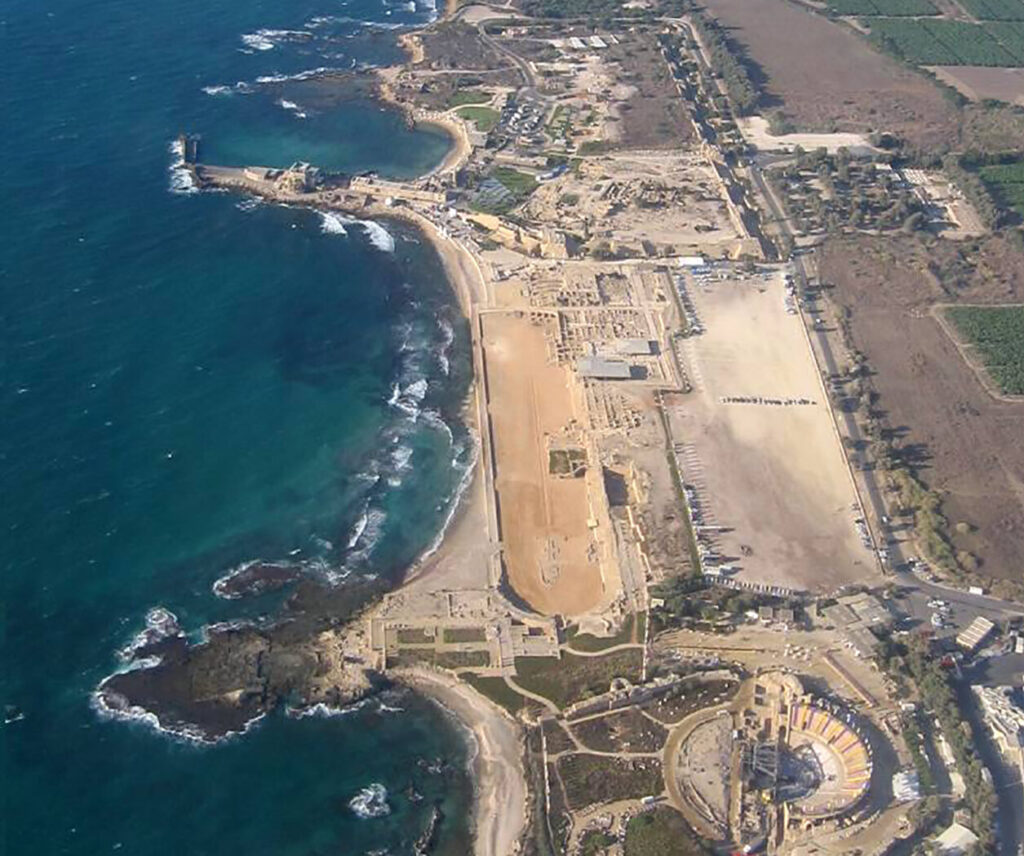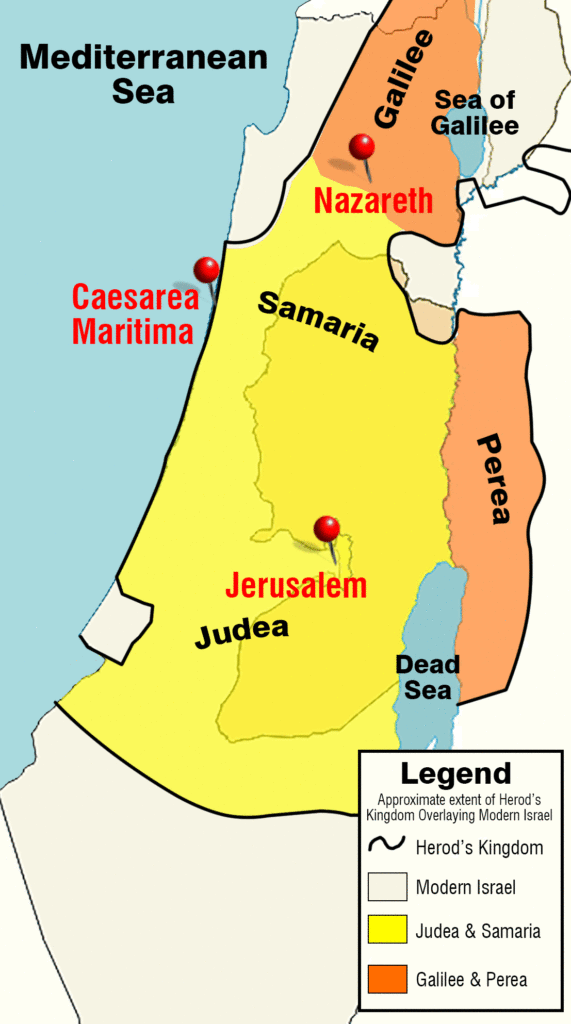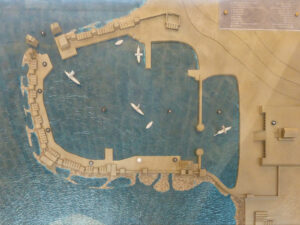By Dr. Don Bierle, FaithSearch President
If you ask most Christians about Caesarea in Judea, you are likely to get a shrug of the shoulders or a puzzled facial expression. If they know about it at all, compared to Nazareth, Bethlehem, or Jerusalem, it doesn’t really count.
Yet, consider the answer to the following:
- Where was the first Gentile, Cornelius the centurion, converted? (Acts 10:1, 24)
- Where did Philip the evangelist reside with his four daughters? (Acts 21:8)
- From what port city did Saul sail for Tarsus when fleeing from the Jews? (Acts 9:30)
- Where did Paul land when returning from his second missionary journey? (Acts 18:22)
- Where was Paul a prisoner for two years while awaiting his trial in Rome? (Acts 24:27; 25:1, 4, 6, 13)
- Where was Herod Agrippa I smitten by an angel when accepting idolatrous homage? (Acts 12:19-23)
- Where was the capital of the Roman province of Judea located, the seat of the governors or procurators, and the headquarters of the Roman troops?
The answer to all these is “Caesarea”!
Caesarea Maritima was no small matter. It was the crowning achievement of Herod the Great’s many magnificent building projects. A new Roman city and harbor, second-to-none on the Mediterranean, was located seventy miles northwest of Jerusalem and completed between 22 and 10 B.C., shortly before Jesus came. It was built and named after Emperor Augustus, Caesarea “Sebaste” (Greek: Sabastos = “Augustus”).
The Harbor
Few could believe the account by first-century Jewish historian Flavian Josephus of this harbor, at whose mouth “stood colossal statues, three on either side, resting on columns; the columns on the left of vessels entering port were supported by a massive tower, those on the right by two upright blocks of stone clamped together, whose height exceeded that of the tower on the opposite side” (Jewish War, I, 413).
Until recent archaeology at the site, nearly all readers were totally skeptical of this description and that 2,000 years ago Herod’s builders could perform seemingly impossible engineering feats. Herod the Great wanted a magnificent harbor befitting his kingdom, and his engineers showed a mastery of technology rivaling that of our own age. “Sehastos” was truly one of the engineering marvels of the ancient world.
The harbor construction was made possible by the discovery of a high-quality concrete which would harden underwater and was practically impervious to the destructive action of the sea. Blocks of this hydraulic concrete weighing more than fifty tons each have been discovered and made up the main breakwater.
The forty-acre outer and inner harbors would accommodate 300 ships, much larger than the modern harbor existing today. With its status and massive harbor—the largest built in the open sea at that time—Caesarea became a major port city and grew in importance and wealth, reaching its height in the Byzantine period (fifth–sixth centuries C.E.).
The City
Caesarea Maritima had all the elements of a major Roman city and more, including streets laid out in the standard Roman grid plan with underground pipes to deliver residential water. The fresh water came from springs at the base of Mount Carmel, which was carried to Caesarea by a ten-mile long aqueduct which would service 50,000 people.

It included a most magnificent and luxurious palace built on a promontory jutting out into the Mediterranean. An Olympic size pool was in the center, surrounded by statutes, a prison (Praetorium, cf. Acts 13:35, where Paul was kept), and a variety of rooms and buildings for guests and entertainment. The city also included a 5,000-seat theater and a great oval hippodrome course for horse and chariot races. Temples to Augustus and Roma completed the city features.
There is one more New Testament connection with Caesarea. The physician Luke was with Paul when he went to Jerusalem (“we” in Acts 21:15), was arrested, and was sent to Herod’s Caesarea prison for two years. Luke claimed to have “investigated everything carefully from the beginning” for the material in his Gospel (Luke 1:3) and included details about the nativity of Jesus which only His mother Mary would know.
It is not only possible, but likely, that during the time he was with Paul in Caesarea, Luke walked the thirty-five miles to Nazareth (see map on previous page) and secured this exclusive information directly from Mary which he included in his account of Jesus’ birth.
Sources for both Caesarea articles: “Caesarea Maritima: The Search for Herod’s City,” August 24, 2015, By Robert J. Bull, Bible History Daily blog, published by Biblical Archaeology Review.
“On-Site at Caesarea Maritima,” January 24, 2022, By Nathan Steinmeyer, Bible History Daily Daily blog, published by Biblical Archaeology Review.
“New Discoveries Unveiled at Caesarea Maritima,” May 04, 2017, By Robin Ngo, Bible History Daily blog, published by Biblical Archaeology Review.
“Divers Discover Sunken Cargo at Herod’s Port City,” May 19, 2016, By Robin Ngo, Bible History Daily blog, published by Biblical Archaeology Review.
“Roman Concrete,” June 13, 2013, By Robin Ngo, Bible History Daily blog, published by Biblical Archaeology Review.





